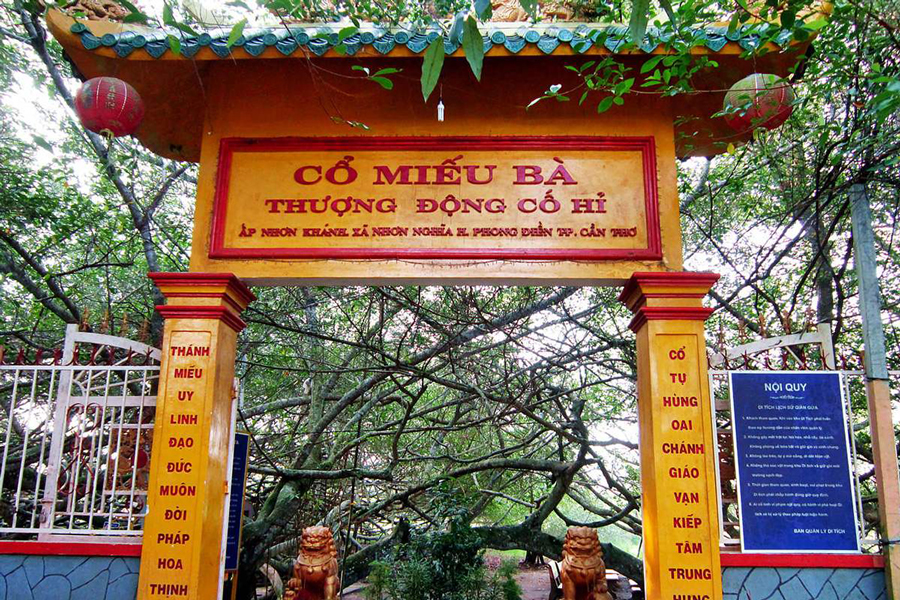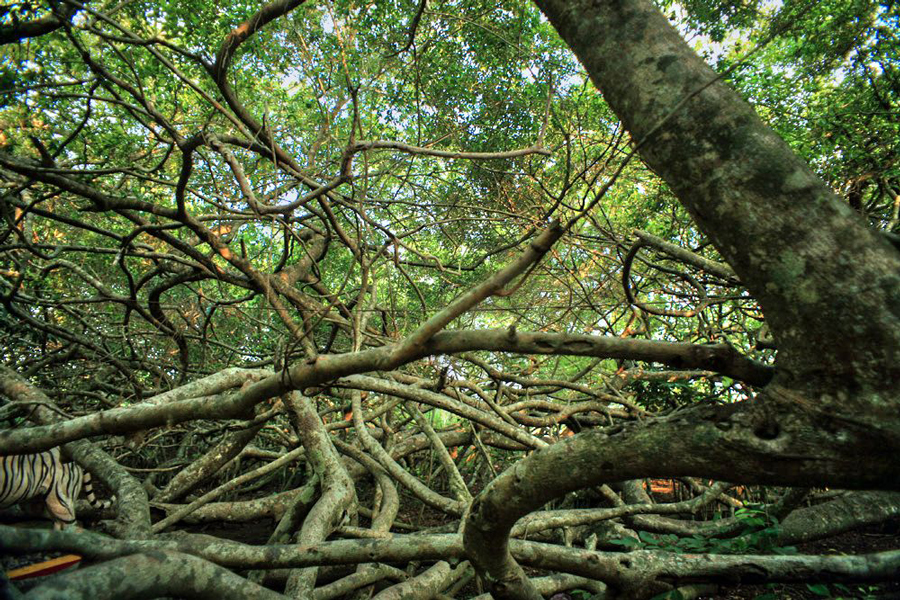Gian Gua Historical Relic Site

The Gian Gua relic site in Vietnam stands out for its uniqueness, where the colossal trunks and branches of a tree intricately weave together to create a colossal Gian Gua.
Upon visiting the Gian Gua relic, visitors are greeted by the awe-inspiring sight of a robust ancient truss, where numerous trees and branches intertwine tightly, resembling an enormous network. Some branches bear the scars of past conflicts, marked by cuts and spots from bombs and bullets. Nevertheless, these branches continue to thrive and cast their shade. Beneath the expansive tree canopy, a sense of comfort and tranquility prevails, thanks to the cool and fresh air that envelops the area.
Gian Gua represents a picturesque landscape intertwined with the history of Phong Dien land, serving as the cradle of revolution with a rich tradition of heroic and resilient struggles by the army and people of Can Tho. Additionally, it serves as a hub for cultural and religious activities, where people gather to pray for favorable weather and prosperous business endeavors.
The Gian Gua relic site holds profound historical significance, bearing witness to the heroic struggles, sacrificial acts of brave soldiers, and the resounding triumphs achieved by our army and people. This location served as a pivotal battleground during the resistance against French colonialists, where officers and soldiers established a base for conducting guerrilla activities.
In the face of the resistance war against American imperialism, Gian Gua regained strategic importance. It became the chosen site for opening training classes, aimed at cultivating a cadre of skilled revolutionary soldiers to reinforce the armed forces in the southern suburbs during that period. During the triumphant Mau Than offensive in 1968, the Gian Gua relic site played a crucial role as a hiding place for weapons and ammunition, facilitating the implementation of effective battle plans that ultimately led to the decisive victory for our army and people.
It is noteworthy that Gian Gua remained closely intertwined with the army and people of Can Tho throughout the most intense phases of the war, serving as the backdrop where numerous heroes fell and sacrificed their lives in service of the nation.
Shrine worshiping Lady Thuong Dong Co Hi

Temple of Lady Thuong Dong Co Hi
The origin of Gian Gua in Can Tho is veiled in uncertainty. Elderly residents recall a time when this vast bamboo trellis covered a significant area in their childhood. According to local folk beliefs, a temple was erected in ancient times to honor Mrs. Thuong Dong Co Hi. She is venerated as a goddess and benefactor, believed to bring prosperity and happiness to the land and its people.
Giant Gian Gua natural ecological area

The tree is more than 100 years old
The Gian Gua relic site boasts an extensive collection of trees, some surpassing the age of 100 years. The main grove covers a vast area of approximately 2,700 square meters, characterized by intertwining branches and roots. Upon exploration, visitors encounter tree trunks bearing scars from wartime bombings, as these trusses served as both shelter and protective barriers for soldiers. Despite enduring numerous bombing raids, the resilient trees persistently sprout and continue to thrive.
Festival of Gian Gua relic site

The festive and bustling atmosphere at Gian Gua
At the Gian Gua Relic Area, you'll encounter not only a vast primeval forest with wartime traces but also vibrant festivals. Celebrations include July 27 (War Invalids and Martyrs Day), December 22 (founding day of the Vietnam People's Army), and February 28 (Memorial Day for Lady Thuong Dong Co Hi). For a distinctive experience, visit in February during the lively Ong Can Tho Pagoda Festival.
The ticket price to visit the Gian Gua Phong Dien relic site in Can Tho is the best for FREE

Entrance gate of Gian Gua historical relic site
Because it is a historical site, Gian Gua does not have the best season to visit. Visitors can visit Gian Gua any time from Monday to Sunday from 7:00 a.m. to 6:00 p.m.
Location: Nhon Khanh Hamlet - Nhon Nghia Commune - Phong Dien District - Can Tho
About 14 km from Can Tho city center, to reach the Gian Gua relic site, visitors can choose one of two routes below